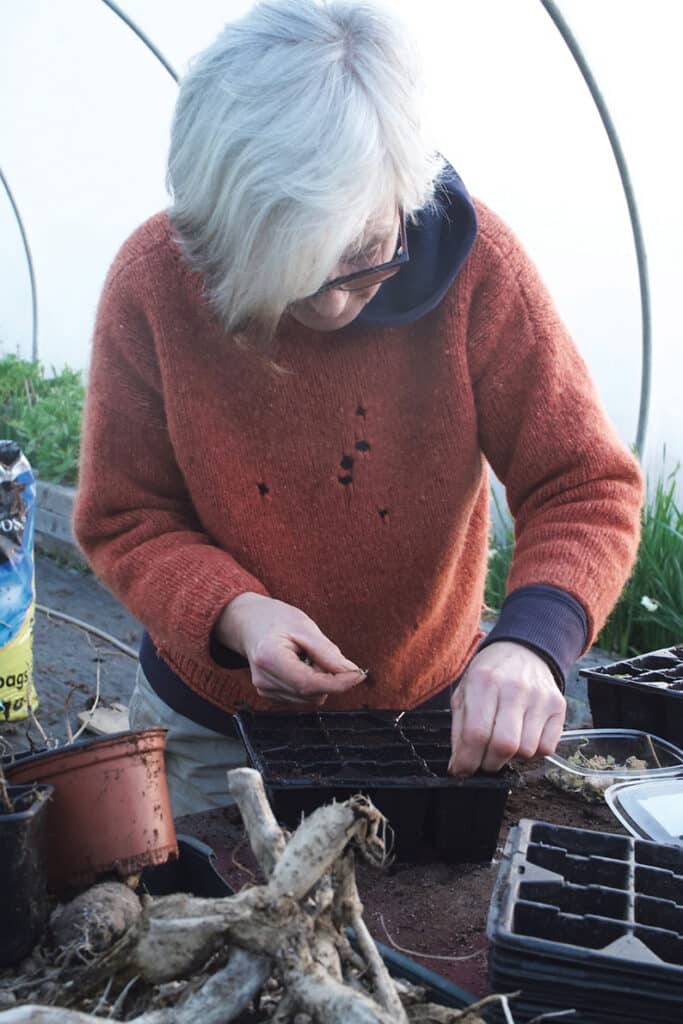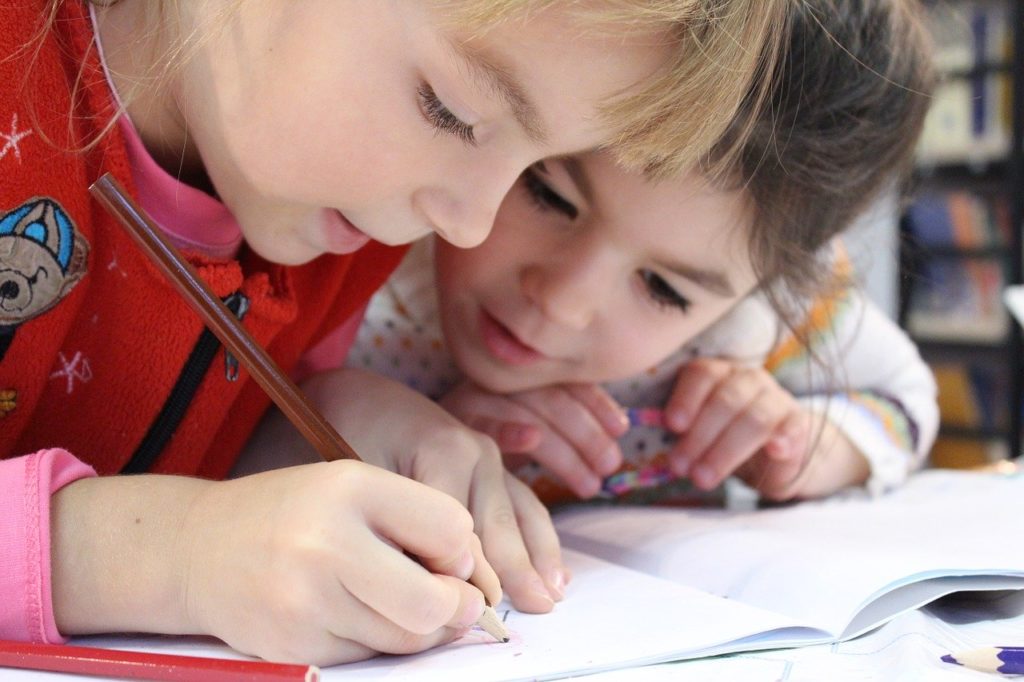Mags Riordan of Bumblebee Farm is guiding us through the planning, planting and caring of a bed for cut flowers. By the time summer arrives the bed should boast an abundance of pollinator-friendly flowers ready for cutting and enjoying. This month she focuses on seed sowing.

Most seeds are easy because they’re large enough to handle except for Antirrhinum, but more on that in a while.
Firstly, you’ll need as fine a compost as you can get, as this allows for free movement of the fine roots of your new babies once they germinate. A good clean seed or module tray. Be sure to clean it well and a few drops of teatree oil in the water when rinsing won’t go amiss. You need a clean sterile environment, as newly germinated seedlings are vulnerable in the early stages. Loosely fill the seed tray, level off but don’t press the compost, as this will compact the soil which makes it more difficult for roots to move freely. Water the growing medium before sowing your seed; this will settle the compost enough to get rid of any air pockets. Most of the seeds are big enough to handle and can be placed on the compost and gently pressed in.
Nasturtium can be sown to a depth of 5mm but the rest can be sown on the surface with a little sprinkling of compost over them. Antirrhinum seed on the other hand are incredibly fine, almost dust-like, so a little more care is needed. Pinch gently and try and spread and space the seed out as evenly as you can. I would recommend sowing these separately and at least three to four weeks before the other seeds in the plan, as they also take longer to germinate. If you’re using a heated propagator, this will speed things up by a week or two. They take about 20 to 30 days to germinate and a further two to three weeks to grow beyond the first two cotyledons but after that they fly along. Because they are slow to get going, allowing the extra time should have them all flowering at the same time.
It’s best to water from below by placing the seed tray in a dish, sink or bath and allow it to soak up water from below. Allow excess to drain away. Watering this way helps avoid damping off and washing the seed out of the tray. Try and keep the compost moist but not sodden. Moisture and heat are all that your seeds need to germinate at the time. Everything they need is contained in that miracle seed. At this time of year, a sunny windowsill is fine to get seed to germinate.
We will be sowing all the seed on our next Instagram live on March 20 if you want to see us doing it and we will have a Q&A at the end to answer any of your questions.
Julie from Blooming Native seed will be joining us to chat about the best native wildflower mixes for our pollinators, and using them in a garden situation, as well as the best ones for our native pollinators. As always this will go up as a video for you to watch later if you need to.
Bee Kind


